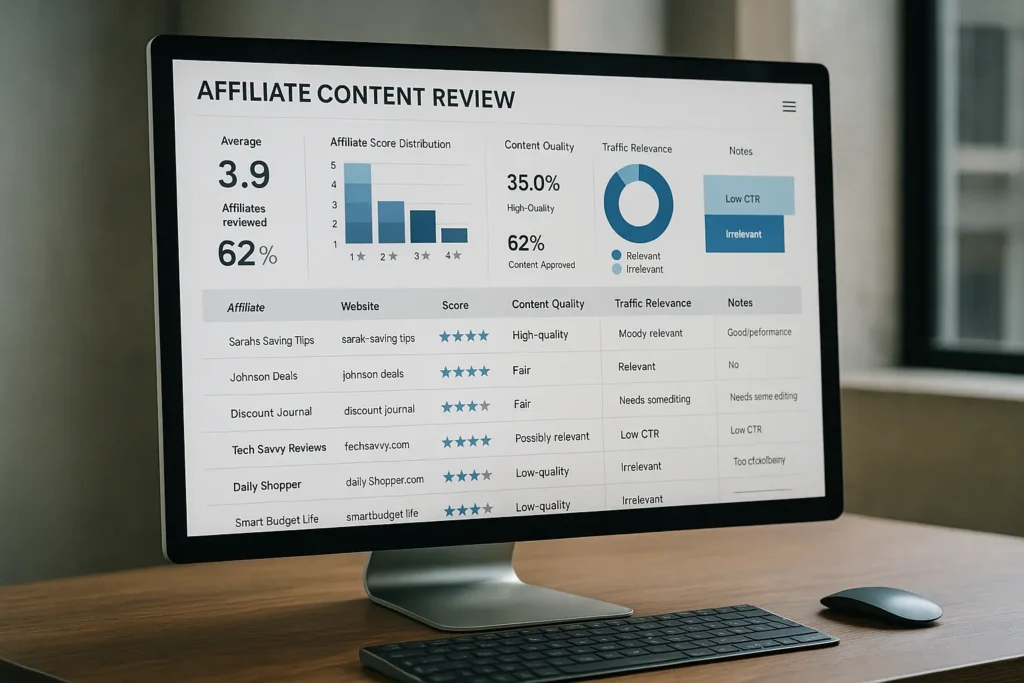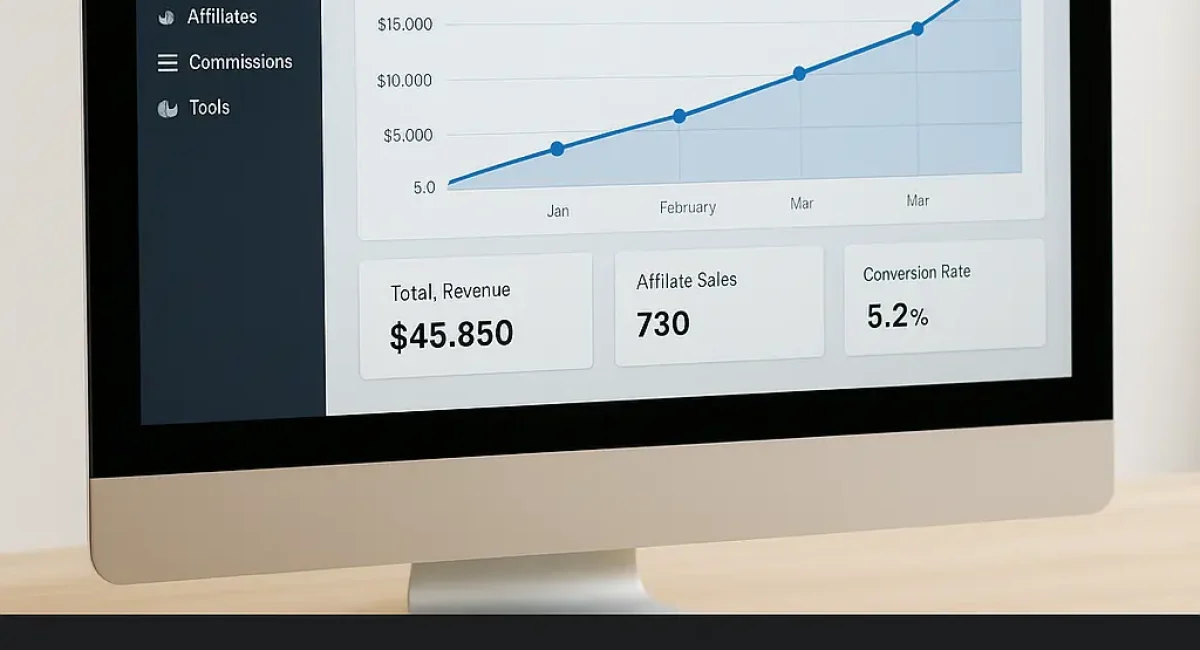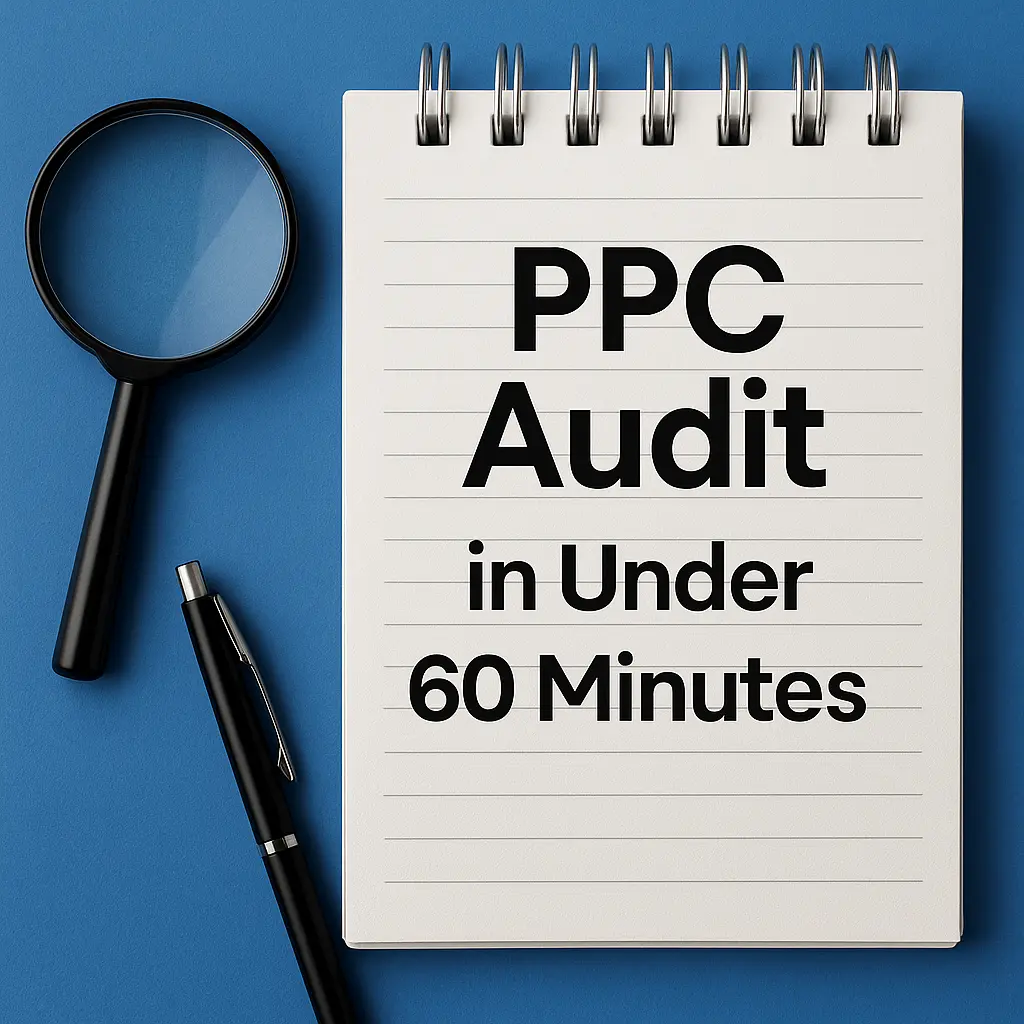Table of Contents
Introduction
Building a successful affiliate program isn’t just about numbers—it’s about results. Many businesses dive into affiliate marketing with high hopes, only to find their programs flooded with partners who drive traffic but fail to deliver revenue. The problem isn’t affiliate marketing itself; it’s the lack of focus on affiliate recruitment strategies that prioritize quality over quantity.
This guide is designed to help affiliate managers, startups, and established brands create a pipeline of high-converting affiliates who generate real leads and sales. We’ll explore where to find these partners, what incentives to offer, how to vet their audience for relevance, and the tools you can use to track performance effectively. By the end, you’ll have a clear roadmap to build revenue partnerships that move the needle for your business.
Whether you’re launching a new program or revamping an underperforming one, the focus here is on actionable steps to attract affiliates who align with your goals. Let’s dive into the strategies that separate vanity metrics from true profitability.
Why Quality Matters in Affiliate Recruitment
Not all affiliates are created equal. Some drive thousands of clicks with little to no conversions, while others bring in smaller, targeted audiences that buy consistently. The difference lies in the quality of the affiliate and their alignment with your brand.
Recruiting low-quality affiliates can harm your program in several ways: wasted resources, diluted brand reputation, and skewed data that makes it hard to measure success. On the other hand, partnering with high-converting affiliates ensures your efforts translate into measurable revenue, not just empty traffic stats.
The Cost of Low-Quality Traffic
Low-quality traffic often comes from affiliates who prioritize quantity over relevance. This might include clickbait-driven publishers or those using outdated tactics like spammy email lists. The result? High bounce rates, low engagement, and minimal sales.
According to a report by CJ Affiliate, programs that focus on quality partnerships see up to 30% higher conversion rates compared to those chasing sheer volume. Investing time in proper partner vetting upfront saves money and builds a sustainable program.
Where to Find Performance-Focused Affiliates
Finding the right affiliates starts with knowing where to look. Instead of casting a wide net, target platforms and communities where serious, results-driven publishers congregate. Here are some proven places to start your affiliate recruitment efforts.
1. Affiliate Networks
Networks like ShareASale, CJ Affiliate, and Rakuten Advertising connect businesses with publishers. These platforms allow you to filter affiliates by niche, performance metrics, and audience demographics, making it easier to find high-quality partners.
- ShareASale: Great for small to medium businesses with a wide range of niche affiliates.
- CJ Affiliate: Ideal for larger brands with access to premium publishers.
- Rakuten: Focused on global reach and high-end partnerships.
2. Industry Conferences and Events
Events like Affiliate Summit provide a goldmine for networking with potential affiliates. These gatherings attract serious players who are often looking for new revenue partnerships. Prepare a compelling pitch about your program and follow up with personalized emails post-event.

3. Niche Forums and Communities
Look for online communities related to your industry, such as Reddit threads, Quora spaces, or specialized Facebook groups. Engage authentically and identify active members who might be interested in affiliate partnerships. Avoid overt promotion—focus on building trust first.
4. Competitor Analysis
Analyze competitors’ affiliate programs using tools like Ahrefs or SimilarWeb to see who’s promoting them. Reach out to those affiliates with a better offer. Be ethical—don’t poach aggressively, but position your program as a complementary or superior opportunity.
What to Offer High-Converting Affiliates
Once you’ve identified potential partners, the next step is crafting an irresistible offer. Affiliates who drive revenue expect value in return, whether it’s through commissions, support, or exclusivity. Here’s how to structure your program to attract the best.
Competitive Commission Structures
Offer commission rates that stand out in your industry. Research average rates in your niche using resources like Affiliate Marketer Training and aim to be at or above the standard. Consider tiered structures to reward top performers.
| Niche | Average Commission Rate |
|---|---|
| Beauty Products | 8-15% |
| Software/SaaS | 20-50% |
| Fashion | 5-10% |
Bonuses and Incentives
Go beyond standard commissions. Offer performance bonuses for hitting specific sales targets, seasonal promotions, or exclusive discount codes for their audience. These extras can motivate affiliates to prioritize your program over others.
Marketing Support
Provide affiliates with high-quality creatives, landing pages, and tracking links. The easier it is for them to promote your product, the more likely they’ll invest effort. Consider creating a resource hub with banners, email templates, and product guides.
Exclusivity and First Access
Offer top affiliates early access to new products or exclusive deals. This makes them feel valued and gives them unique content to share with their audience, driving higher engagement.
How to Vet Affiliates for Audience Quality
Recruiting affiliates is only half the battle—ensuring their audience aligns with your target market is critical. Proper partner vetting prevents partnerships that look good on paper but fail to deliver. Here’s how to evaluate potential affiliates.
Analyze Their Audience Demographics
Use tools like SimilarWeb or ask affiliates for audience data (age, location, interests). Ensure their followers match your ideal customer profile. An affiliate with a mismatched audience won’t drive conversions, no matter how large their reach.
Check Content Quality and Relevance
Review their website, blog, or social media. Is their content high-quality, authoritative, and relevant to your niche? Avoid partners who post inconsistently or rely on sensationalist tactics that could damage your brand.

Assess Engagement Metrics
Look beyond follower counts to engagement rates—comments, shares, and likes. High engagement often indicates a loyal, trusting audience, which is more likely to convert. Tools like Social Blade can help analyze these metrics for social media affiliates.
Request Case Studies or Past Results
Ask potential affiliates for examples of past campaigns. Did they drive sales for similar products? What were their conversion rates? Serious affiliates won’t hesitate to share this data if they’re confident in their performance.
Start with a Trial Period
Before committing to a long-term partnership, test the affiliate with a short-term campaign. Monitor their traffic quality and conversions using tracking tools (more on this below). This minimizes risk while giving you real-world data to evaluate their fit.
Tools to Track Affiliate Performance
Tracking is the backbone of a successful affiliate program. Without accurate data, you can’t identify which partners are driving revenue or optimize your strategy. Here are essential tools and metrics to monitor as part of your affiliate manager tips.
Affiliate Tracking Software
Platforms like Post Affiliate Pro, Refersion, and Tapfiliate provide robust tracking for clicks, conversions, and commissions. They also offer reporting dashboards to analyze affiliate performance in real time.
- Post Affiliate Pro: Customizable for complex commission structures.
- Refersion: User-friendly for smaller businesses.
- Tapfiliate: Great for scalability and multi-channel tracking.
Google Analytics for Traffic Analysis
Use Google Analytics to track the quality of traffic affiliates send. Look at metrics like bounce rate, time on site, and goal completions. Set up UTM parameters for each affiliate link to distinguish their contributions.
For a detailed guide on setting up UTM tracking, check Google’s official documentation.
Key Metrics to Monitor
| Metric | What It Tells You |
|---|---|
| Click-Through Rate (CTR) | How compelling the affiliate’s promotion is. |
| Conversion Rate | Percentage of clicks turning into sales or leads. |
| Earnings Per Click (EPC) | Revenue generated per click—higher is better. |
| Return on Investment (ROI) | Overall profitability of the partnership. |
Heatmaps and User Behavior Tools
Tools like Hotjar or Crazy Egg show how affiliate-driven visitors interact with your site. Are they engaging with key pages, or bouncing quickly? This data helps identify whether an affiliate’s audience is genuinely interested in your offer.
Building Long-Term Relationships with Affiliates
Recruiting high-converting affiliates is just the start—retaining them requires ongoing effort. Strong relationships lead to sustained performance and loyalty. Here are some affiliate manager tips to foster lasting partnerships.
Communicate Regularly
Keep affiliates in the loop with program updates, product launches, and promotional calendars. Use email newsletters or a dedicated Slack channel for quick communication. Regular check-ins show you value their contribution.
Provide Timely Payments
Nothing frustrates affiliates more than delayed commissions. Set clear payment schedules and stick to them. Use automated payout systems through your affiliate software to avoid errors or delays.
Offer Personalized Support
Assign a dedicated contact (if possible) or be responsive to their needs. Help troubleshoot tracking issues, brainstorm campaign ideas, or provide custom creatives. Personalized attention can set your program apart.

Recognize and Reward Top Performers
Highlight top affiliates in newsletters or on your website (with their permission). Send thank-you notes, gift cards, or exclusive perks. Recognition builds goodwill and motivates continued effort.
Conclusion
Building an affiliate program that drives revenue, not just traffic, requires a strategic approach to affiliate recruitment. By focusing on quality over quantity, you can attract high-converting affiliates who align with your brand and deliver measurable results. This guide has covered the essentials: finding performance-focused partners, crafting compelling offers, vetting their audience, tracking performance with the right tools, and nurturing long-term relationships.
The future of affiliate marketing lies in deeper, data-driven partnerships. As technology evolves, so will the tools and tactics for identifying and activating top affiliates. Start small, refine your process, and scale with intention. With the right revenue partnerships, your affiliate program can become a powerful engine for sustainable growth.
Take the first step today—audit your current affiliates or begin your search for new ones using the strategies above. The impact on your bottom line will speak for itself.
Ready to take your affiliate department to the next level? Talk to us for a free consultation call.
FAQs
What is the average ROI for a well-managed affiliate program?
A well-managed affiliate program typically generates an ROI of 12:1, meaning businesses earn $12 for every $1 spent on their affiliate program. This is significantly higher than many other digital marketing channels, which average 5:1 to 8:1 ROI.
According to recent data from the Performance Marketing Association, businesses that focus on recruiting high-quality affiliates rather than sheer quantity can see ROIs as high as 15:1. The key factors influencing these returns include proper affiliate vetting, competitive commission structures, and consistent performance tracking.
It’s worth noting that new affiliate programs may take 3-6 months to reach their optimal ROI, as building relationships with quality affiliates and optimizing conversion funnels takes time.
How many affiliates should I start with for a new program?
For new affiliate programs, it’s best to start with 5-10 carefully selected, high-quality affiliates rather than casting a wide net. This focused approach allows you to provide personalized support and refine your processes before scaling.
According to data from Affiliate Benchmark Reports, programs that begin with fewer than 15 highly-relevant affiliates typically see 32% higher conversion rates in their first quarter compared to programs that launch with 50+ untargeted affiliates.
As your program matures, aim to maintain the 80/20 rule that’s common in affiliate marketing – where approximately 20% of your affiliates will drive 80% of your results. For established programs, having 25-50 active, high-converting affiliates is often more valuable than hundreds of low-performing ones.
What commission rates should I offer to attract top-performing affiliates?
Commission rates vary significantly by industry, but offering competitive or above-average rates is crucial for attracting high-converting affiliates. Current industry benchmarks show:
– Physical products: 5-15% of sale value (with higher-priced items typically at the lower end)
– Digital products: 30-50% (reflecting the higher margins)
– SaaS products: 20-40% of first-month revenue or 15-30% of the customer lifetime value
– Subscription services: 100-200% of the first month’s payment or 15-40% recurring commissions
Beyond base rates, consider implementing tiered commission structures that reward higher performance. Data from the Affiliate Summit shows that programs offering performance bonuses (such as 5% increases for hitting sales targets) retain top affiliates 27% longer than fixed-rate programs.
How can I accurately measure affiliate traffic quality beyond just conversion rates?
Measuring affiliate traffic quality requires looking beyond basic conversion metrics to understand true audience value. Key metrics to track include:
Average Order Value (AOV): High-quality affiliates often drive customers with 15-25% higher AOV than general traffic sources.
Customer Retention Rate: Track how many affiliate-referred customers make repeat purchases. Quality traffic typically results in 20-30% higher retention rates.
Engagement Metrics: Monitor metrics like pages per session (ideally 3+), time on site (2+ minutes indicates interest), and bounce rate (quality traffic should have rates below 60%).
Refund/Chargeback Rates: Quality traffic should result in refund rates below 5%, significantly lower than industry averages of 7-10%.
Implement post-purchase surveys asking “How did you hear about us?” to cross-validate your tracking data and gain qualitative insights about affiliate-referred customers.
What are the most common reasons affiliate programs fail to drive revenue?
Affiliate programs often underperform for several specific reasons that go beyond poor recruitment:
Inadequate Tracking Implementation: According to industry research, 23% of affiliate programs suffer from tracking issues that fail to properly attribute sales, leading to underpaid affiliates who eventually abandon the program.
Lack of Competitive Differentiation: Nearly 35% of failing programs offer identical terms to competitors without any unique selling points for affiliates, making recruitment of quality partners nearly impossible.
Poor Conversion Funnels: Post-click experience matters tremendously. Programs with landing pages that aren’t optimized for affiliate traffic see conversion rates 40-60% lower than those with dedicated paths.
Inconsistent Communication: Data shows that programs communicating with affiliates less than monthly see a 45% decrease in active promotion compared to those maintaining regular contact.
Negligent Fraud Prevention: Approximately 8-10% of affiliate activity in unmonitored programs involves compliance issues or fraud, damaging program economics and brand reputation.
What tools are essential for managing a successful affiliate program?
A successful affiliate program requires a tech stack that enables proper tracking, management, and optimization. Essential tools include:
Affiliate Tracking Platform: Solutions like Impact, TUNE, or Partnerize are critical for accurate attribution, with prices ranging from $500-$2,500+ monthly depending on program size and functionality needed.
Fraud Detection Tools: Services like CHEQ or Anura can identify and block invalid traffic, typically reducing fraudulent conversions by 12-18% according to recent industry reports.
Communication Systems: Dedicated email platforms like ActiveCampaign or CRM systems that facilitate regular affiliate communication improve program engagement by 35% on average.
Payment Processing Solutions: Automated payment platforms like Tipalti or PayPal Mass Pay reduce payment errors by 90% compared to manual processes while decreasing administrative time by 70%.
Data Visualization Tools: Programs using dashboard solutions like Tableau or Google Data Studio for affiliate performance reporting make optimization decisions 40% faster than those relying on basic spreadsheets.
How long should it take to see significant results from a new affiliate program?
New affiliate programs typically follow a predictable timeline to revenue significance:
Months 1-3: Initial setup phase with minimal revenue. Focus on recruiting 5-10 quality affiliates and establishing tracking systems. Most programs generate less than $5,000 in revenue during this period.
Months 4-6: Early growth phase where programs begin showing ROI. Industry benchmarks indicate monthly revenue reaching 10-15% of your eventual goal, with 15-20 active affiliates promoting consistently.
Months 7-12: Acceleration phase where revenue climbs more rapidly. Programs with proper management typically reach 40-60% of their revenue potential by the one-year mark.
Months 12-18: Maturity phase where optimization efforts yield significant improvements. Programs achieving maturity typically generate 3-5% of a company’s overall revenue, with some reaching as high as 15-30% in certain industries like fashion and beauty.
Factors affecting this timeline include commission competitiveness, product market fit, affiliate manager experience, and seasonal factors relevant to your industry.





